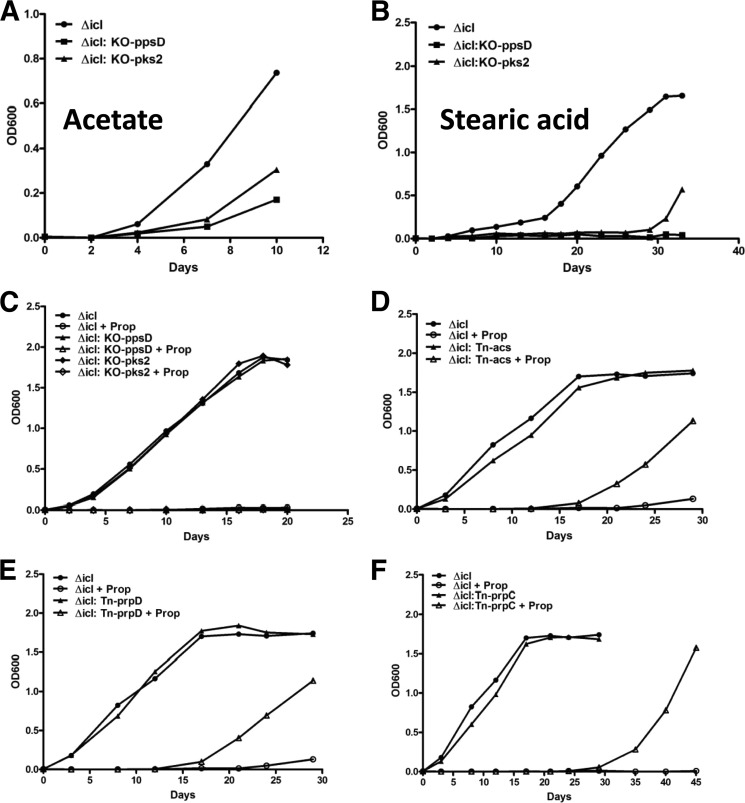FIGURE 7.
Validation of the genes implicated in propionate utilization and detoxification in Δicl Mtb. Genes identified by the TraSH screen were validated through the generation of double mutants and characterized by growth phenotype. A–C, genes negatively selected for involved in methyl branch-containing lipid biosynthesis. Growth of the Δicl1 parental strain and Δicl1:KO-ppsD (PDIM biosynthesis) and Δicl1:KO-pks2 (SL-1 biosynthesis) double mutant strains was assessed in minimal media containing glycerol, propionate, and 1 mm acetate (A) or 0.05 mm stearic acid (B) or without any fatty acid supplement (C). In each instance, the mutants exhibited defective growth in fatty acid with propionate (A and B) yet grew normally in minimal medium with glycerol (C). D–F, genes positively selected as being involved in propionate utilization and the generation of toxic intermediates. Shown is growth of the Δicl1 parental strain Δicl1:Tn acs (Rv3667) (D), Δicl1:Tn prpD (Rv1130) (E), or Δicl1:Tn prpC (Rv1131) (F) in minimal media containing glycerol and 0.05 mm propionate (D and E) or 0.1 mm propionate (F). These mutants all grew normally in minimal medium, and each of the latter two mutations conferred partial resistance to propionate toxicity, consistent with their enrichment under propionate selection. Results are representative of three experiments.

